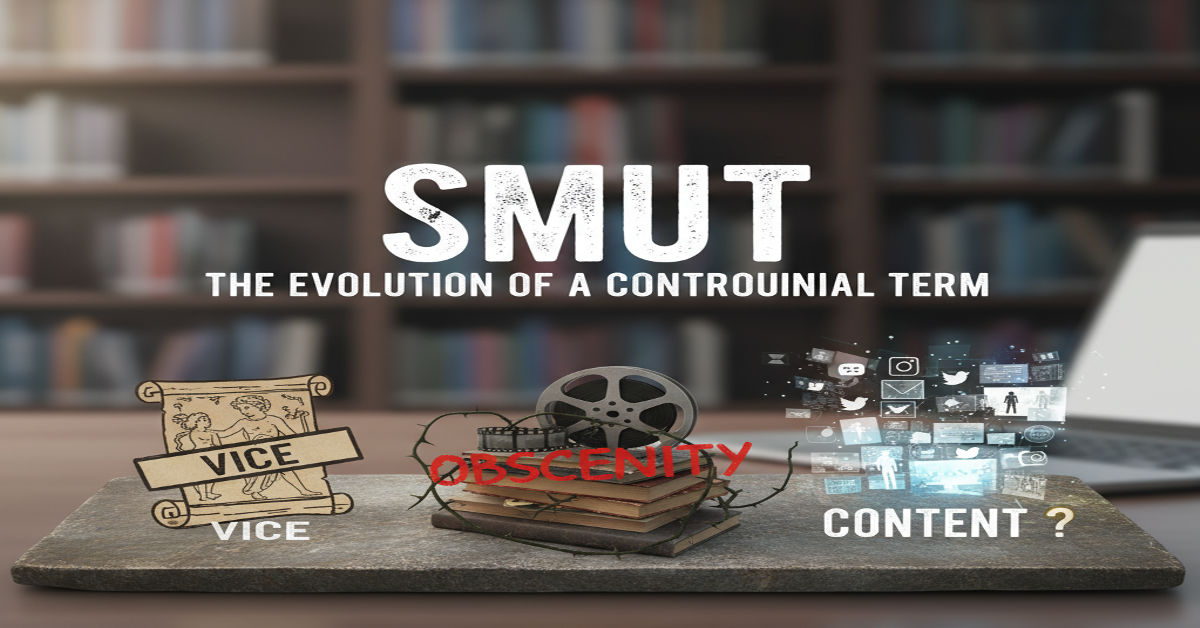Smut—a word that ignites curiosity and stirs up a whirlwind of emotions. It’s often cloaked in controversy, yet it finds its way into conversations across various platforms. As society evolves, so does our understanding of this term. What once may have been relegated to the shadows now dances into the light, challenging perceptions and sparking discussions about morality, art and expression. Join us as we delve deeper into the complex journey of “smut,” tracing its origins, exploring modern interpretations and uncovering how this seemingly simple word has woven itself into the fabric of culture over time.
The origin of the word and its early meanings
The term “smut” has roots that trace back to Old English. Originally, it referred to soot or dirt. This connection hints at something unclean or undesirable.
As language evolved, so did the meaning of smut. By the late 19th century, its connotation shifted towards sexually explicit content. It became associated with writings deemed improper or scandalous.
In literature, smut often described works that pushed societal boundaries on sexuality and morality. Authors who explored taboo subjects faced backlash but also engaged readers’ curiosity.
This duality in meaning reflects society’s ongoing struggle with themes of purity versus depravity. Over time, what was once purely about filth transformed into a label for provocative material that challenged conventional norms.
The evolution of the term in modern times
In modern times, the term “smut” has experienced a significant transformation. Once associated strictly with vulgar content, it now encompasses a broader spectrum of sexual expression in literature and media.
Digital platforms have played a crucial role in this evolution. With the rise of self-publishing and online communities, smut found new life beyond traditional boundaries. Writers can explore themes that were once taboo or censored.
Social media also shifted perceptions. What was deemed inappropriate is often celebrated as empowerment today. Influencers embrace eroticism to promote body positivity and sexual liberation.
Despite its acceptance, some still view smut through a critical lens. The polarization continues as discussions about consent and representation emerge within these narratives.
As genres blend more freely, “smut” increasingly resonates with diverse audiences seeking authentic voices in storytelling. The term’s fluidity reflects society’s ongoing dialogue around sexuality and freedom of expression.
Controversies surrounding the use of
The term “smut” often ignites heated debates. Its usage raises questions about morality, censorship, and artistic expression.
Many view smut as purely negative—something to be shunned or hidden away. Critics argue that it objectifies individuals and perpetuates harmful stereotypes. This perspective can lead to calls for regulation in media and literature.
On the other hand, advocates defend its inclusion as part of a broader narrative. They believe that smut challenges societal norms and opens conversations about sexuality.
In today’s digital landscape, the line between artistic freedom and offensive content blurs further. With platforms like social media amplifying voices on both sides, discussions become increasingly complex.
As creators push boundaries, audiences must navigate their own comfort levels with such material. The conversation surrounding smut is multifaceted and reflects deeper cultural values at play in society today.
Positive and negative connotations attached to
The term “smut” carries a fascinating duality. On one hand, it often evokes negative feelings. Many associate it with shame or immorality, viewing it as something taboo. This perspective can stem from cultural norms that deem certain expressions of sexuality inappropriate.
Conversely, there’s an emerging appreciation for smut in various contexts. Some see it as empowerment—a celebration of sexual freedom and exploration. In literature and art, smut can challenge boundaries and provoke thought.
This dichotomy creates a rich tapestry of perceptions around the word. People engage with smut differently based on personal experiences or societal influences.
It’s this complexity that makes language so intriguing—its meanings shift according to context, audience, and intent. The interplay between these connotations shapes how we understand not only the term itself but also our relationship with sex and expression in society today.
Impact on various industries such as media, literature, and entertainment
Smut has made a significant mark across multiple industries, particularly in media. Online platforms have embraced adult content, leading to an explosion of subscription services and niche websites catering to diverse tastes. This shift has challenged traditional norms and sparked debates about censorship.
In literature, smut often pushes boundaries. Authors are exploring themes previously deemed taboo, giving voice to uncharted narratives. Genres like erotic fiction have gained traction, allowing readers to engage with their fantasies openly.
The entertainment industry isn’t left out either. Television shows and films increasingly feature explicit content as part of storytelling. This evolution reflects changing societal attitudes towards sexuality.
As these industries adapt, they navigate the fine line between artistic expression and moral implications. The conversation around smut continues to evolve as it shapes cultural perceptions of intimacy and desire.
Changing attitudes towards
Societal attitudes towards smut have shifted dramatically over the years. Once shunned and relegated to dark corners of culture, it has emerged into a more accepted realm.
The rise of digital platforms has played a crucial role in this change. With easy access to erotic content, many people now view smut as an expression of human desire rather than something taboo.
Moreover, discussions around sexuality are becoming bolder and more open. Conversations that once took place behind closed doors are now part of mainstream dialogue. This shift fosters understanding and acceptance among audiences.
As people embrace diverse forms of self-expression, what was once considered offensive is being redefined as artful exploration. The line between artistic merit and explicit content continues to blur, prompting fresh perspectives on what constitutes value in literature or media.
These evolving views challenge traditional norms while encouraging critical thinking about personal taste and societal boundaries.
Conclusion: Embracing the complexity of language and understanding context
Language is a living organism, constantly evolving and adapting to cultural shifts and societal norms. The term “smut” has traveled through time, gaining layers of meaning along the way. What once described something as simple as dirt now carries implications that range from playful to provocative.
Understanding smut requires us to embrace its complexity. It challenges us to look beyond surface-level definitions and consider context—how it’s used in literature, film, or everyday conversation. While some view it negatively due to its associations with indecency, others find power in reclaiming the term for self-expression or artistic exploration.
As we navigate these changing landscapes of language, we must remain open-minded. Whether you see smut as an affront or a celebration of human experience depends on your perspective. Engaging with such terms enriches our understanding of communication itself—a powerful tool capable of both division and unity.
By acknowledging the multifaceted nature of words like smut, we foster more meaningful dialogues about art, morality, and everything in between. Embracing this complexity allows us not only to appreciate language but also the diverse ways people express their identities within it.







